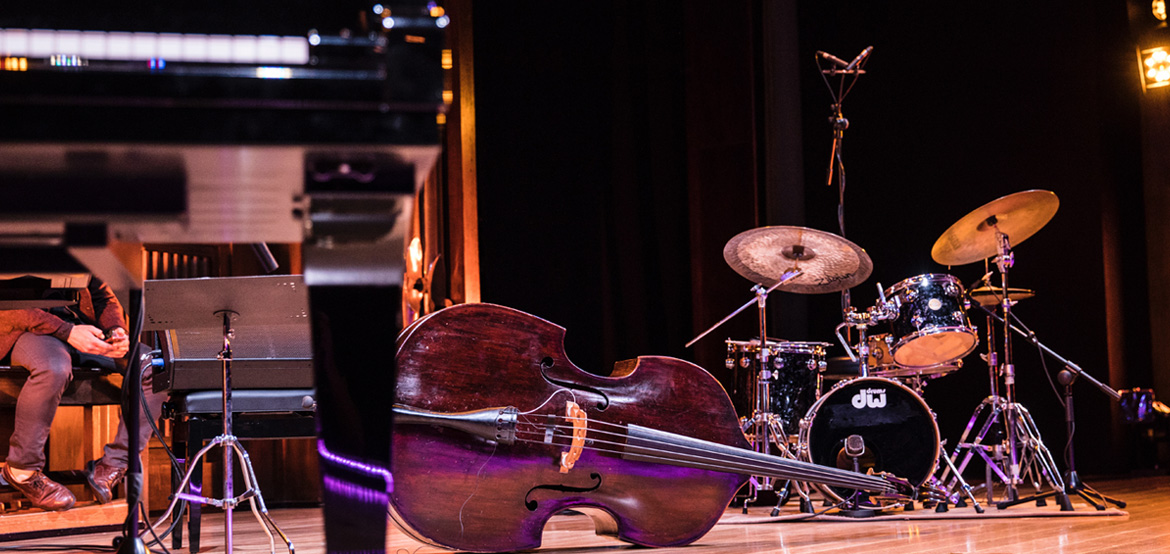Diversifying our piano students beyond the solo concert pianist
Chamber Music is the most intimate form of musical collaboration. The repertoire is broad and the skills required to execute it are varied and often specific to the specialisation of the instrumentalists.
The traditional role of the pianist over time has developed to be either in the absolute foreground or in the shadows of the background. In other words, pianists have worked to perform as soloists or, in its ugliest term perhaps, the hired help. Last century, much work was committed to illustrating the accompanist as a pianist with specific skill and integrity to both the music and the partner musician. Notable pianists such as Gerald Moore went on to create literature that outlined the trade-specific skills required of an accompanist.
In more recent years, much work has been done to shift the language away from ‘accompanist’ to include terms such as ‘associate artist’, or the use of ‘collaborative pianist’ or even ‘pianist’, and to establish a new etiquette to include the pianist as part of the ensemble. With online literature such as the Collaborative Piano Blog and Chamber Music Journal, a greater awareness of this trend, with pianists taking bows at equal points with associate artists and a change in name, is becoming of greater importance.
“The term collaborative piano is an Americanism that is gradually becoming acceptable in Australia. At first, when hearing it spoken by an American musician, I felt an aversion, which was quite misplaced. Upon reflection, the term encompasses far more the true engagement undertaken by pianists who choose to work primarily with instrumentalists or singers. The role is one of collaboration, not merely accompanying, and I feel the use of a terminology that aptly describes the role is beneficial in raising the profile, giving more credibility and raising the standard of performance to the discipline. I am proud that I am a pianist – one who spends a great deal of time in collaboration with other musicians. In other words, I am a collaborative pianist.” Dr Jeanell Carrigan, Associate Professor in Collaborative Piano at Sydney Conservatorium of Music.
How does it look in the studio practice room?
Teaching students the necessary skills for collaborating with peers and fellow musicians is some of our most exciting work. The fundamental skills are taught in so many of our lessons through solo repertoire and activity, including sight reading and visual literacies, aural skills, and technical proficiency at the keyboard. However, the opportunity to share these skills in an ensemble as a pianist are less apparent than for other instruments.
The greatest indicator of success for an ensemble is psychological safety, that is, an equal understanding of commitment and responsibility to each other. When mentoring an ensemble, sharing a clear sense of purpose and goal setting is essential. Teachers may develop this by asking students to outline their personal goals in the rehearsal room and in the practice studio, as well as their repertoire ambition and performance goals. Establishing clear communication and equal commitment allows each student to feel safe in their musical contributions and expectations of each other.
It has been said that ‘chamber music is the classical version of a garage band’, and if we are to make this ring true, the repertoire and performance opportunities must be relevant and appeal to the student musicians. This is not to suggest that the repertoire should only include covers of popular music; quite the opposite. Repertoire should be relevant to the student. By devising a program that appeals to students’ varied interests, you will challenge and direct the ensembles’ learning and encourage collegiality.
“Chamber music is an example of group problem-solving at its best. There is nothing I love more than setting students the task of immersing themselves in an early Beethoven trio, and systemically working through all the astonishing learning opportunities it presents, ranging from articulation, phrasing, rhetoric, structure, to the proper assimilation of harmonic knowledge, to extra-musical considerations like group dynamics.” Dr Anna Goldsworthy, Seraphim Trio & Senior Lecturer in Classical Ensemble at Elder Conservatorium of Music, Adelaide.
Piano duets are an excellent way to get students excited about collaborating. Firstly, students have the opportunity to play alongside their teacher, modelling good practice in rhythm, breath and phrase. Repertoire may be chosen to highlight reading of a particular clef (across primo and secondo parts), to give focus to style (often this is established in the secondo part), or to introduce arrangements of well-known themes. Secondly, pairing students is easily managed as this can be achieved within your own studio or in collaboration with a colleague. This gives the opportunity for students to establish positive relationships with peers and teachers, further enhancing the collaborative process. There is a variety of repertoire available online and with the Christmas season approaching, music stores are packed with libraries of duo collections. It is exciting for students to play alongside their teacher, and in these cases the opportunity to read duets together makes appropriate rewards in the lesson.
When matching students for varied instrument pairings or ensembles, it is important to be mindful of the fact that in many arrangements the pianist will have the most difficult part to play. It is possible that the other instrumentalists will have participated in chamber music situations more regularly.
For student piano trios, there is a variety of resources available to get you started. Tunes for My Piano Trio by Shiela Nelson is a top recommendation of mine – this two-book series has appropriate arrangements for the younger student, with various styles and compositional teaching strategies exploring rhythm, pitch and texture.
Once established, a young ensemble will begin to enjoy the individual preparation that they have managed throughout their week and will enjoy sharing with the rest of the ensemble. Understanding the roles of melody, tone colour and texture are just some of the skills that develop, encouraging the performers to listen to each other and — perhaps for the first time — themselves. As this understanding develops, simple popular music charts may be sourced and the students can be given the task of arranging purely through play. This is a great activity in mapping out individual roles within the ensemble.
Additionally, exposure to great music and inspiring musicians is key to exciting both the student toward practice in the home, and initiating rehearsal with peers. Here are my top three recommendations to inspire the collaborative pianist in any young musician:
- The Piano Guys – with a mission to bring uplifting music to the world, this piano-cello duo make popular music accessible, inspiring and delightfully playable
- Anderson & Roe – graduates of the Julliard School of Music, this pair of virtuosic pianists are revolutionising the piano duo
- Joo & Igudesman – with a flair for tasteful musical comedy, the virtuosity in this piano-violin duo have a dynamic musical partnership. Igudesman has composed an exciting violin-piano sonata that is currently listed on the AMEB Violin Certificate of Performance syllabus and is excellent for the advanced instrumentalist.
Where to from here?
As the role of the collaborative pianist is recognised more and more as an associate artist, festivals and training in this field have become more popular. When attending my first intensive summer school as a collaborative pianist ten years ago, I had access to the best pedagogy and collaborative performance that our country had to offer. I discovered a world where working alongside other instrumentalists as an ensemble pianist was celebrated, recognising the necessary skills required as a reliable collaborative pianist. Sharing in this was exciting and this experience kick-started my commitment to working as a collaborative pianist.
Most Australian states have dedicated Accompanist Guilds, with biennial awards offered by New South Wales (David Miller Award) and South Australia (Geoffrey Parsons Award). Eisteddfods are now offering accompaniment prizes, as seen in Sydney at the Ryde Eisteddfod. The Accompanist Guilds of South Australia (AGSA) and of Queensland (AGQ) are particularly active in their advocacy for the collaborative pianist, particularly in training young pianists through mentoring, masterclasses and performance opportunities throughout the year. AGSA host an annual festival, giving focus each year to a relevant topic in collaborative piano.
Similarly, festivals and training are offered each year at events such as the Adelaide Chamber Music School, Australian Festival of Chamber Music Winter School, Australian Youth Orchestra and Musica Viva artist programs. Music teachers’ associations across the country are offering workshops in chamber music and collaborative piano as we diversify our piano students beyond the solo concert pianist.
There are also a number of examinations available for student pianists and their associate artists. Trinity College of London exams offer both a Piano Accompanying syllabus (grades 5-8) and an Ensembles Certificate syllabus. ABRSM offer ensemble certificate exams, which include specific repertoire selections for four-handed piano duo, and piano with another instrument. St. Cecilia School of Music offers a syllabus in certificate piano duet exams, and diploma exams in accompaniment. AMEB will release their new piano syllabus to incorporate collaborative piano at the end of 2018. Currently, the Sydney Conservatorium of Music is the only Australian institution offering post-graduate coursework studies in collaborative piano, and the Australian National Academy of Music mentors pianists specifically in chamber music with the professional performance program.
There is nothing like being in the presence of live chamber music, with a collaborative pianist modelling and managing a range of diverse skills on stage in performance. Organisations such as Musica Viva are committed to bringing local and international pianists to perform in collaboration with likeminded artists, with concerts in every Australian state. More local and intimate initiatives are also on the rise, with programs such as Selby and Friends and Twilight Musical Dialogues, where the pianist is integral to the programming of performances and repertoire. It is this kind of experiential learning that may transcend any lessons taught in the studio.
“My intensive work with my trio, Seraphim, over the last two decades has been central to my development as a musician. We have, essentially, brought each other up, and the relationships we’ve cultivated with audiences and communities around Australia have defined my sense of artistic purpose and mission.” Dr Anna Goldsworthy.




